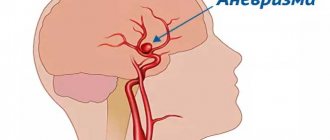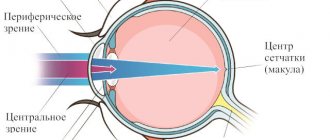Zefirka
> Medicine > Lobotomy: a little history and scary photos
Lobotomy is one of the darkest pages of psychosurgery, a terrible operation that was performed on patients suffering from mental disorders (mostly women). Even modern medicine doesn’t know much about mental health. The brain is a complex organ, and you can’t just poke around with a sharp piece of iron. Unfortunately, this is exactly what happened during a lobotomy and the results of such surgical procedures were very disastrous. When we think of doctors, we think of someone we can trust. After all, they definitely understand this! Especially with something as complex as mental illness. And that's what makes the lobotomy story so tragic. All these patients clearly suffered (although not all of them were sick) and trusted the doctors, but the doctors deceived them. So here are some basic facts about the history of lobotomy.
Reflection in society
Lobotomy has been depicted and mentioned in many famous films and books, including the novel All the King's Men by R. P. Warren, the play Suddenly, Last Summer by T. Williams, the X-Files Season 4 episode "Anxiety", the novel One Flew Over "Cuckoo's Nest" by K. Kesey and its film adaptation of the same name, the thriller "Shutter Island" by Martin Scorsese (based on the novel of the same name by Dennis Lehane), the film "Sucker Punch", a song by Green Day, the science fiction action movie "Total Recall" and others. The dominant depiction of the effects of lobotomy in works of art is that of the patient falling into a vegetative state after the operation, unable to speak or think. In this way, the authors seek to portray the inhumanity of psychiatrists.
Cases of almost complete recovery after a lobotomy were rare - this happened, for example, with Howard Dally, who underwent the operation at the age of 12 and subsequently wrote a book about himself, “My Lobotomy”[21]. Another famous case was the story of Rose (Rosemary) Kennedy, sister of US President D.F. Kennedy, who, at the request of her father, was operated on by W. Freeman in 1941. Disabled by surgery, she spent the rest of her life in various institutions and died in 2005 at the age of 86.[21]
How the operation was carried out, purpose
The first lobotomy on a human was performed by neurosurgeon Almeida Lima under the direction of E. Moniz in 1936. It looked like this. A woman suffering from severe paranoia had two holes drilled in her skull and injected with alcohol, which destroyed some of the white matter in her frontal lobes. As a result, the patient's condition improved.
The operation was called leucotomy - from the Greek words λευκός (“white”, after the color of the tissues inside the brain) and τομή (“cut”).
Soon Moniz created a special device with a wire loop - a leucote, which was used for the operation. It was inserted into the brain tissue on one side through a hole in the skull and then rotated. Thus, half of the frontal segment of the brain was isolated from the rest of the central nervous system: the nerve fibers conducting impulses were cut.
Moniz released data that of the 20 operated on, 7 recovered, the condition of another 7 improved, and in 6 there were no changes. He did not report the consequences of disruption of brain connections. Meanwhile, from the perspective of modern medicine, the short duration of observations of patients after surgery is striking: after only 3-4 days they were released on all four sides. No long-term studies have been conducted. Later it turned out that the operation could have prolonged (long-term) consequences.
Lobotomy. The History of Brain Evisceration, or the Most Shameful Nobel Prize
Cutting through the white matter
The culprit in this whole story can be considered the American railroad worker Phineas Gage, who in 1848 received a steel rod in the head as a result of an accident.
The rod entered the cheek, rotated the brain matter and exited at the front of the skull. Gage, surprisingly, survived and became the object of close study by American psychiatrists. Scientists were interested not in the fact that the railway worker survived, but in what changes happened to the unfortunate man. Before his injury, Phineas was an exemplary God-fearing person who did not violate social norms. After a 1-inch diameter rod destroyed part of his frontal lobes, Gage became aggressive, blasphemous, and sexually incontinent. It was at this time that psychiatrists around the world realized that brain surgery could significantly change a patient’s mental health.
40 years later, Gottlieb Burckhardt from Switzerland removed parts of the cerebral cortex from six seriously ill patients in a psychiatric hospital in the hope of alleviating their suffering. After the procedures, one patient died five days later in epileptic seizures, the second later committed suicide, the operation had no effect on two violently insane people, but the remaining two actually became calmer and caused less trouble to others. Burckhardt's contemporaries say that the psychiatrist was pleased with the results of his experiment.
Phineas Grage
The idea of psychosurgery was returned to in 1935, when encouraging results appeared in the treatment of violent chimpanzees by excision and removal of the frontal lobes of the brain. In the laboratory of primate neurophysiology, John Fulton and Carlisle Jacobson performed operations on the frontal cortex of the brain. The animals became calmer, but lost all ability to learn.
The Portuguese neuropsychiatrist Egas Moniz, impressed by such results from his overseas colleagues, in 1936 decided to try leucotomy (the predecessor of lobotomy) on hopelessly ill violent patients. According to one version, the operations themselves to destroy the white matter connecting the frontal lobes with other areas of the brain were carried out by colleague Monica Almeida Lima. 62-year-old Egash himself could not do this due to gout. And leucotomy turned out to be effective: most of the patients became calm and manageable. Of the first twenty patients, fourteen showed improvement, while in the rest everything remained the same.
What was such a miraculous procedure? Everything was very simple: the doctors drilled a hole in the skull with a hammer and inserted a loop that cut through the white matter. In one of these procedures, Egas Moniz was seriously injured - after cutting the frontal lobe of the brain, the patient went berserk, grabbed a gun and shot at the doctor. The bullet hit the spine and caused partial unilateral paralysis of the body. That, however, did not stop the scientist from promoting a wide advertising campaign for a new method of brain surgery.
Everything was fine at first glance: calm and manageable patients were discharged from the hospital, whose condition was hardly monitored in the future. This became a fatal mistake.
Egas Moniz and his leucotomy method
But for Moniz, everything turned out to be very positive in the future - in 1949, the 74-year-old Portuguese received the Nobel Prize in Physiology or Medicine “for the discovery of the therapeutic effects of leucotomy in certain mental illnesses.” The psychiatrist shared half of the prize with the Swiss Walter Rudolf Hess, who conducted similar studies on cats. This prize is still considered one of the most shameful in scientific history.
Lobotomy scheme
Lobotomized patient
Ice pick
Advertising of a new method of psychosurgery especially affected two American doctors, Walter Freeman and James Watt Watts, who in 1936 lobotomized housewife Alice Hammett as an experiment. Among the high-profile patients was Rosemary Kennedy, JFK's sister, who was lobotomized in 1941 at her father's request. Before the operation, the unfortunate woman suffered from mood swings - sometimes excessive joy, sometimes anger, sometimes depression, and after that she turned into a disabled person, unable to even take care of herself. It is noteworthy that most of the patients were women, whom fathers, husbands or other close relatives sent to psychiatric institutions for treatment of violent temperament. Most often, there were no special indications even for treatment, let alone surgical intervention. But at the end of the day, caring relatives received a manageable and flexible woman, of course, if she survived the procedure.
Freeman at work. Simple tools
By the early 40s, Freeman had so perfected his lobotomy, which involved separating the frontal lobes of the brain, that he learned to do without drilling the skull. To do this, he inserted a thin steel instrument into the prefrontal lobes of the brain through a hole, which he had previously punched above the eye. The doctor could only “rummage” a little with the instrument in the patient’s brain, destroy the frontal lobes, remove the bloody steel, wipe it with a napkin and begin a new lobotomy. With the beginning of the war, thousands of mentally broken combat veterans arrived in the United States, for whom there was nothing to treat. Classical psychoanalysis was not particularly helpful, and chemical treatments had not yet appeared. It was much more economical to lobotomize most of the front-line soldiers, turning them into obedient and meek citizens. Freeman himself admitted that lobotomy “proved ideal in the conditions of overcrowded psychiatric hospitals, where there was a shortage of everything except patients.” The Veterans Administration even launched a program to train lobotomists, which had a very negative impact on further psychiatric practice. Freeman also unexpectedly adapted an ice pick (“ice pick”) as a lobotomy instrument - this greatly simplified the barbaric operation. Now it was possible to destroy the frontal lobes of the human brain almost in a barn, and Freeman himself adapted a small van for this purpose, nicknamed the Lobomobile.
Patients who have undergone psychosurgical intervention
Doctors often performed up to 50 lobotomies per day, which significantly relieved the burden on psychiatric hospitals in the United States. Former patients were simply transferred to a silent, calm, humble state and sent home. In the vast majority of cases, no one monitored people after operations - there were too many of them. In the United States alone, more than 40 thousand frontal lobotomy operations were performed, a tenth of which were performed personally by Freeman. However, the doctor should be given credit for monitoring some of his patients.
Catastrophic consequences
On average, 30 out of 100 lobotomized patients exhibited some degree of epilepsy.
Moreover, in some people the disease manifested itself immediately after the destruction of the frontal lobe of the brain, and in some people several years later. Up to 3% of patients died during a lobotomy from a cerebral hemorrhage... Freeman called the consequences of such a surgical intervention frontal lobotomy syndrome, the manifestations of which were often polar. Many became incontinent in food and became severely obese. Irritability, cynicism, rudeness, promiscuity in sexual and social relationships became almost the calling card of the “cured” patient. The person lost all ability for creative activity and critical thinking. Freeman wrote in his writings on this subject:
“A patient who has undergone extensive psychosurgery, at first reacts to the outside world infantilely, dresses carelessly, commits hasty and sometimes tactless actions, does not know any sense of moderation in food, in drinking alcoholic beverages, in love pleasures, in entertainment; wastes money without thinking about the convenience or well-being of others; loses the ability to perceive criticism; may suddenly become angry with someone, but this anger quickly passes. The task of his loved ones is to help him quickly overcome this immaturity caused by surgery.”
.
The advertising of lobotomy founder Egas Moniz and his follower Freeman, as well as the subsequent Nobel Prize, made such a crude and barbaric intervention in the human brain almost a panacea for all mental illnesses. But by the early 50s, a huge amount of data began to accumulate, exposing the vicious essence of lobotomy. The fashion for such psychosurgery quickly passed, doctors unanimously repented of their sins, but almost 100 thousand lobotomized unfortunates were left alone with their acquired ailments.
A paradoxical situation has developed in the Soviet Union. The monopoly of Ivan Pavlov’s teaching, which developed in physiology and psychiatry in the 40-50s, largely limited the development of medical sciences, but here the effect was the opposite. Having carried out 400 lobotomies, the medical community abandoned the fashionable technique with the wording “to refrain from using prefrontal leucotomy for neuropsychiatric diseases as a method that contradicts the basic principles of surgical treatment of I. P. Pavlov.”
Based on materials from the book by Samuel Chavkin “The Thieves of the Mind. A Brief History of Lobotomy."
Surgical theater
It is believed that Freeman was too happy to be able to legally perform transorbital lobotomies on all patients indiscriminately. He did not complete the procedure in ten minutes - somehow not enough for a complex brain operation, even if it was the most useful operation in the world...
He once performed 25 lobotomies in a day. It was he who first figured out the “humane” use of electric shock to perform operations while patients were unconscious. Worse, Freeman would sometimes lobotomize both sides of his brain just to show off. It is impossible to say exactly how many people he ruined their lives.
Patient monitoring
Moniz treated patients and monitored their behavior just a few days after breaking the connections in their heads. Many believe that the criteria for determining whether a patient was truly normal were biased: the doctor really wanted the result to be positive. Let's be clear: Moniz found improvement in most patients because that's what he wanted to find. Freeman, although he practiced perhaps a more barbaric method, worked with patients after surgery. He did not abandon them until his death.
Soviet method of operation
Scientists from the Soviet Union also made their contribution to the development and improvement of lobotomy. After the end of the Great Patriotic War, the outstanding Soviet neurosurgeon B. G. Egorov began research in the field of psychosurgery, who developed another method of performing lobotomy.
Instead of operating through a burr hole or orbital roof, Egorov proposed performing osteoplastic trepanation. In this case, surgeons had a wider view at their disposal, which made it possible to carry out all the necessary interventions in the patient’s brain much more accurately. The method of the Soviet scientist also implied a more gentle lobotomy - usually the surgeon acted within one frontal lobe, thereby eliminating the possibility of damage to the subcortical formations and pyramidal tracts.
Prohibition of lobotomies
The disastrous consequences of surgical interventions led to the fact that many states began to ban lobotomies.
In 1950, USSR specialists were the first to abandon this method of treatment, and soon a similar decision was made in Germany and Japan.
In the USA, the ban was introduced only in 1967 after another failure by W. Freeman. The doctor performed an operation on his long-time patient, which resulted in a cerebral hemorrhage and death.
Patients recovering from lobotomy
According to W. Freeman's notes, about a third of the operated patients felt improvements. However, there is little information about people whose lives became fulfilling after a lobotomy.
The most famous story is the American Howard Dally, who underwent surgery as a child. There were no special indications for this, but the doctor and parents decided that the child’s disobedience was a sign of a mental disorder.
The operation was carried out, but the patient did not lose his rebellious character and continued to resist adult pressure with great tenacity.
It is currently impossible to determine how the surgical procedure affected the boy. Howard Dally was treated in a psychiatric clinic, was in prison and suffered from alcoholism. However, as an adult, he managed to overcome his addictions, get a profession and start a family.
Howard Dally is the youngest patient, he was 12.
Reflexology. What is this? How can you use it to restore your sense of smell?
Doctors classify reflexology as physiotherapy.
It improves blood supply, innervation, lymphatic drainage, and promotes well-being. With the help of reflexology, you can restore your sense of smell. This is not a new treatment method; it has been used before. Reflexology helps well in the treatment of allergic rhinitis and even infectious rhinitis. Acupuncture - placement of needles, can be combined with cauterization. Internal organs on the surface of the skin have their own projections, which are called miraculous meridians. The doctor acts on the biologically active points of a certain zone, as a result of which microcirculation and lymph flow improve, swelling is eliminated, and the sense of smell improves. By restoring the circulation of energy according to ancient Chinese teachings, we restore health. Information for you was prepared by: neurologist Lyudmila Vasilievna Lebedeva, reflexologist. Conducts receptions in the clinic building on Novoslobodskaya.
A moment of objectivity[edit]
In fact, despite the crippling nature of this procedure, and its insufficient (from a medical point of view, intervention with a chance of 85-90% is not enough, since a person’s life is at stake) predictability, the procedure nevertheless has prospects , and complete abandonment of it may be somewhat premature. Of course, it makes sense to talk about its use only in relation to terminal cases of the disease, when no other therapy simply can help. Resistant mental disorders, in any case, worsen the patient's quality of life to such an extent that even an unsuccessful prefrontal lobotomy cannot be worse than what is already happening to the patient. In fact, in such a situation one should talk about a choice between a method that, at least theoretically, can help, and euthanasia. (Strictly speaking, a palliative that supports the body in conditions of personality disintegration is even worse than euthanasia. Actually, this is why our beloved Terry Pratchett, when the stage of development of Alzheimer’s disease reached the point of decision-making, went for euthanasia. And yes , a lobotomy does not help with Alzheimer's disease, and even if it helped, Pratchett would not have done it. The risk of losing his talent is too great.) And with such a choice, a lobotomy may not be the worst option, capable of returning a person to the possibility of normality (well, at least in to some extent) life. Of course, we are not talking about the American version of this procedure, carried out almost in unsanitary conditions, in an in-line method (this is not an exaggeration) by a visiting propagandist of the method.
And, of course, as I already said - strictly in the presence of evidence confirmed by several medical commissions.
For greater objectivity and to console the victims of punitive psychiatry: lobotomy has its serious psychophysiological consequences. With some probability (depending on the quality of the operation), the patient may experience enuresis, paresis, and impaired motor functions of the musculoskeletal system. As mentioned above, personality also changes. A crooked surgeon can reduce a person to a vegetable (but this is already an extreme). I will also note that in the American psychosurgical school the marriage rate was incredibly high.
However, no one talks about lobotomy as a panacea. Perhaps it could be the last chance in incurable cases of schizophrenia and psychopathy (and it only helps with these two diseases).
No more. But no less.
Informed consent
Nowadays, doctors must first inform the patient about what will be done, what the risks and possible complications are, and only then begin complex physical or mental treatment. The patient, being of sound mind, must understand the risk, make a decision and sign the documents.
But in the days of lobotomy, patients had no such rights, and informed consent was treated carelessly. In fact, the surgeons did whatever they wanted.
Freeman believed that a mentally ill patient could not give consent to a lobotomy, since he was not able to understand all its benefits. But the doctor did not give up so easily. If he could not obtain consent from the patient, he went to relatives in the hope that they would give consent. To make matters worse, if the patient had already agreed but changed his mind at the last minute, the doctor would still perform the operation, even if he had to “turn off” the patient.
In many cases, people had to agree to a lobotomy against their will: doctors or family members decided for them, who, perhaps, did not want to harm, but treated the treatment irresponsibly.
Many people considered lobotomy to be a better alternative
The doctors who advocated lobotomy were not aware of all the risks of brain surgery. They couldn't see what they were doing, but the reason for the operation was justified: psychiatric hospitals were a terrible place for patients, and the procedure could help them lead something like a normal life.
The problem is that at that time there were no drugs that could calm a violent patient for a long time. A severely mentally ill person could cause great harm to himself or others, so sometimes drastic measures were required. Patients often had to be placed in straitjackets and placed in a private room with padded walls. In such conditions, violence was commonplace.
Lobotomy seemed like a way out of a terrible situation for both patients and doctors. It’s a pity that in the end it became not a solution, but a dead end.











